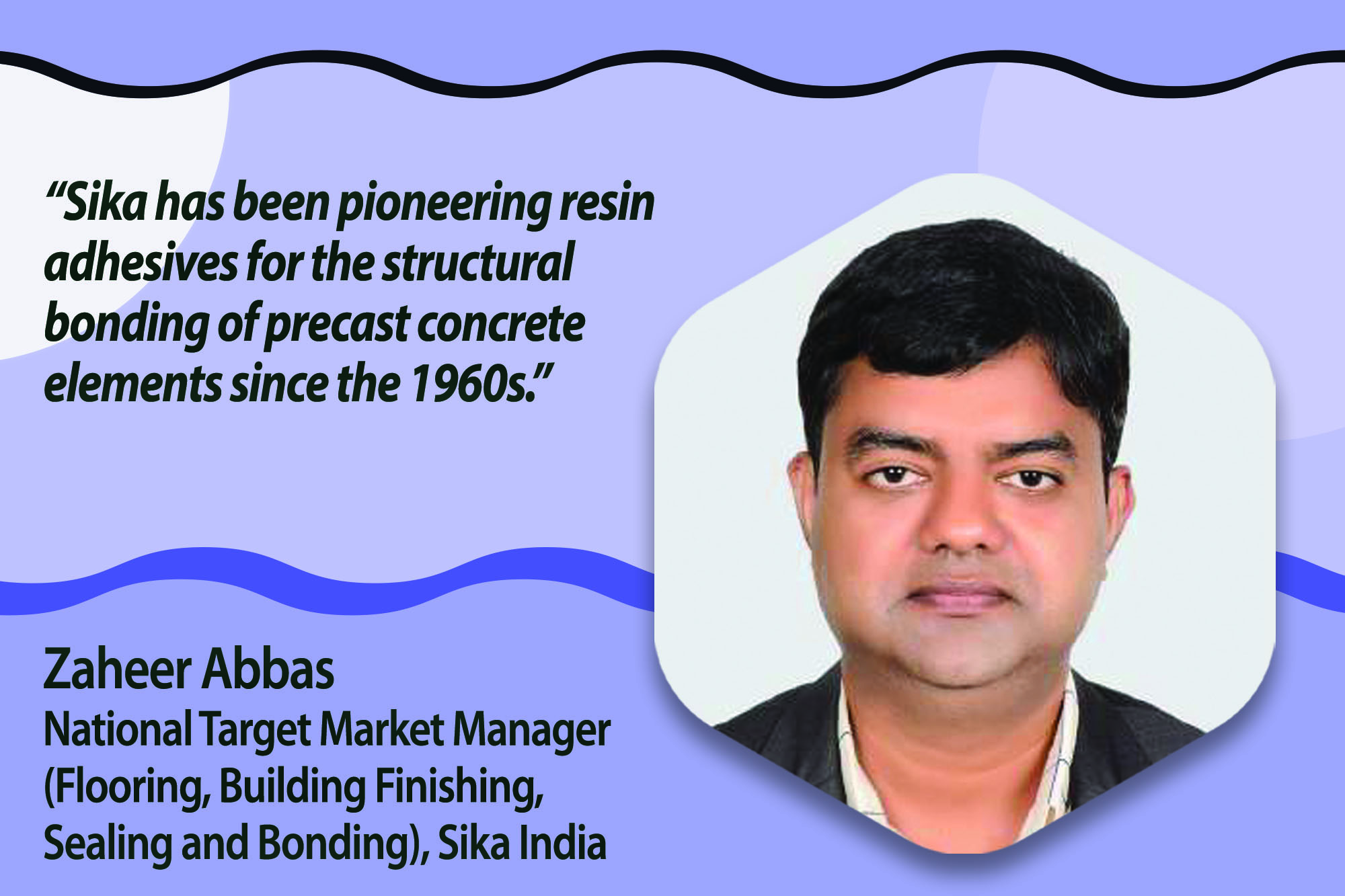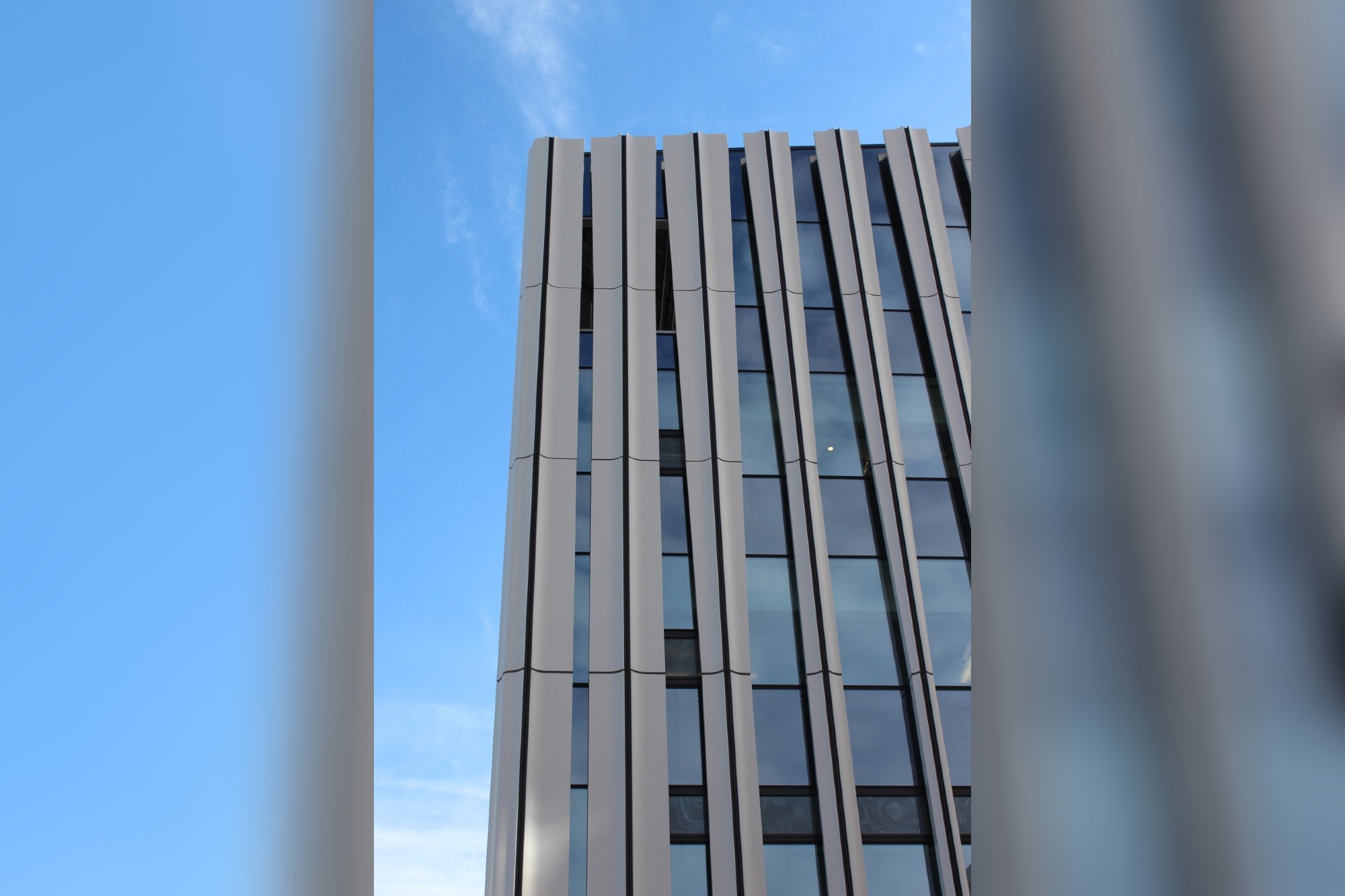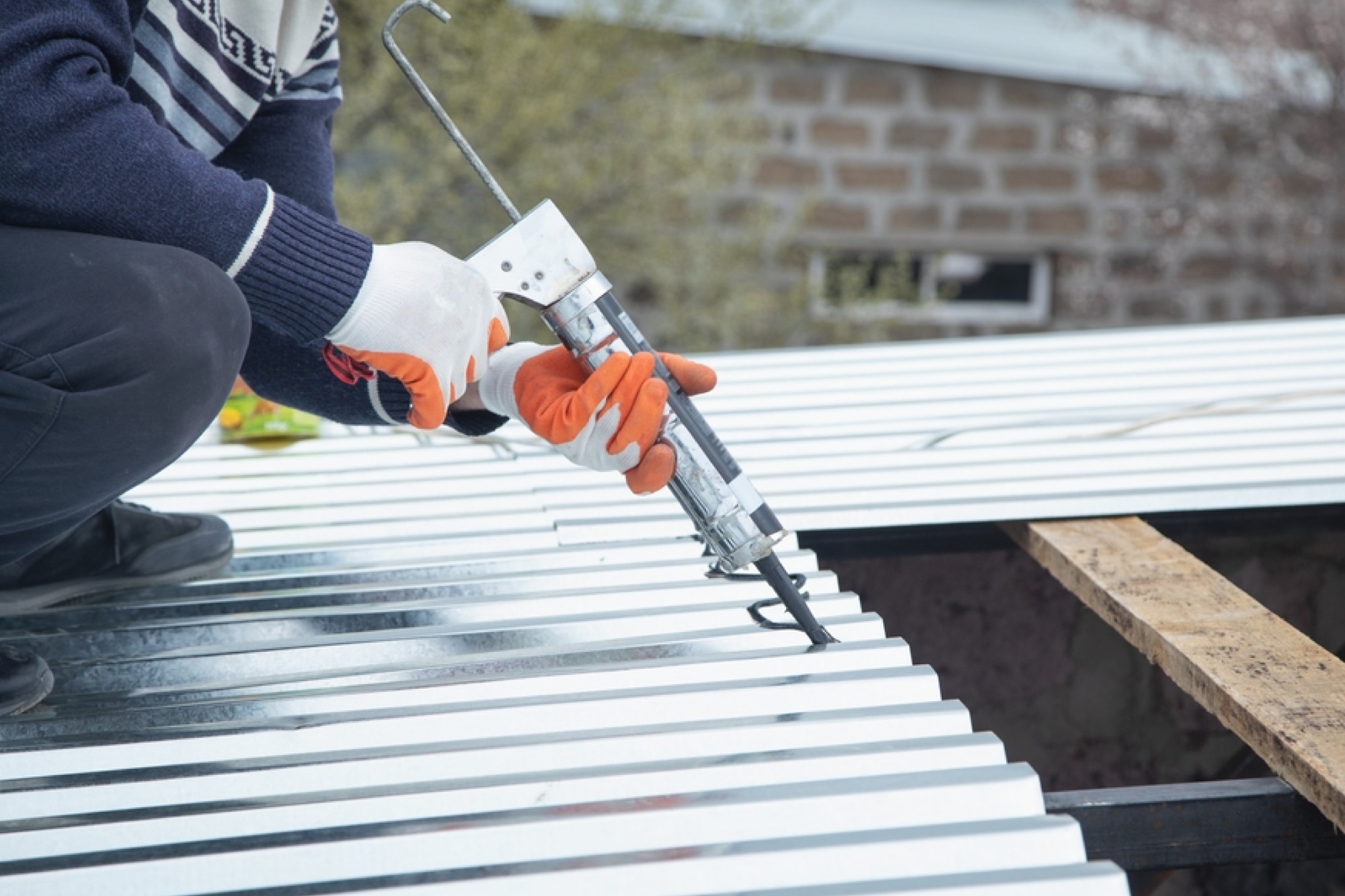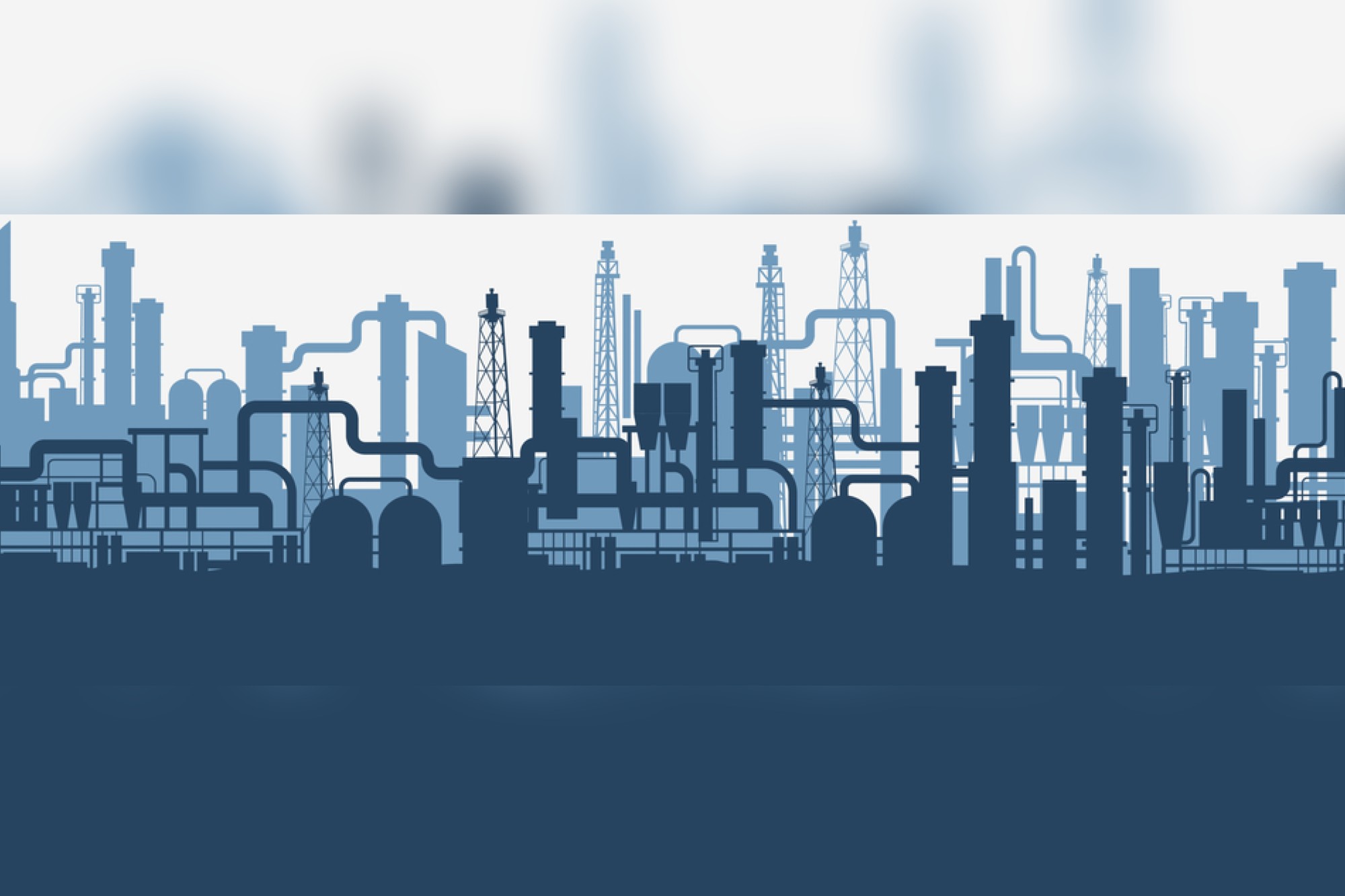Efficiency and safety of adhesives in construction
By Edit Team | April 12, 2024 2:02 pm SHARE

Adhesives and sealants transcend mere bonding revolutionising construction efficiency and safety. Explore how Sika’s solutions redefine operational norms and elevate construction standards, from faster installations to enhanced safety measures.
Two important aspects in every construction project are when two different building elements, either of the same material or different, meet, creating a joint, and when two surfaces of substrates come together, and the need for bonding arises. This makes sealing and bonding an integral part of every construction project management.
At the joint, the different building elements, materials and trades meet. A joint occurs when two components meet and may occur within an element of construction or at part of an interface between two elements. Joint sealing facilitates construction, as several components of different materials are used. Joints allow the needed movement of the materials but must remain water, air, heat, cold, and vapour-tight. The building blocks of your construction – like the concrete slab, the glass facade element, the roofing membrane, and the metal cover – generally do not let water, moisture, or air enter the building or structure. It is at the joints where a building is weakest to leakage. Only correctly specified and professionally applied high-quality joint sealants will keep your building or structure sustainably tight during its lifespan. At Sika, we specialise in providing proven sealing technologies that take care of this aspect, contributing to sustainable construction.
Bonding is a traditional method where the adhesive is applied to the surface of substrates that are then pressed together, and after time, the two objects are strong and rigidly fixed. The adhesive layer between the objects is thin and hard. Load, stress, and movement are transferred directly. Rigid bonding is recommended when bonding very similar materials not subjected to cyclic stress. Typical rigid adhesives are hard epoxy as well as water or solvent-based products. Sika’s structural bonding range of adhesives, epoxy mortars, and bonding bridges play an important role in creating a strong bond for various substrates incl., hardened, green, and fresh concrete, masonry and natural stone, steel and other metals, wood, and fiver-reinforced polymer materials that are used in construction projects.
Advancing precast concrete construction with Sika’s structural adhesives
One of the areas where structural adhesives are crucial is precast concrete elements. Structural adhesives are used for many bonding applications in new construction and refurbishment. The bond must allow the transfer of high loads without deformation and creep. Structural adhesives’ main function is bonding similar or dissimilar materials (i.e., concrete to steel, steel to composites, etc). Depending on their design, structural adhesives can bond the elements together and fulfil additional functions such as waterproofing, sealing, concrete protection or even vibration dampening. Thus, the invisible bond becomes crucial in the integrity and longevity of the project.
Sika has been pioneering resin adhesives for the structural bonding of precast concrete elements since the 1960s. Sika’s epoxy adhesives have now been used to bond segmental bridge structures worldwide. This extensive experience has allowed the development of a wide range of additional structural bonding products and systems for unique applications. In the 1990s Sika also introduced a complete range of cartridge-applied resin anchoring adhesives for many different applications.
Sika’s solutions for building envelopes
Another key application area is the building envelopes, where sealing and bonding are quintessential. A building environment has several areas, like glass-to-glass joints, glass-to-metal joints, natural stone joints, translucent joints, concrete joints, and connection joints. The façade of the building is the face of your building. The facade is of special interest in contemporary architecture, expressed by large dimensions, unconventional shapes, and high material diversity. Joint design is demanding and prone to mistakes. For integral joint specification, following some rough guidelines will result in a long-lasting and tight building envelope. Before you decide on the type of joint sealant to be used in your building’s exterior and interior, some important aspects to consider are joint width, materials to be joined, environmental exposure, and appearance requirements. Sika offers know-how and a broad range of solutions to meet all your sealing and bonding requirements from basement to roof. Building envelope sealants and structural glazing adhesives are some of Sika’s core businesses with a long tradition, top global references, and sound expertise.
Boosting durability
One of the direct contributions of adhesives and sealants is to enhance the efficiency of the systems and processes. Though sandwiched between the two objects, this material enables a safer and more durable life for the connected materials. For example, damping vibration effects and accommodating movements, thus preventing materials from damage, can facilitate faster installations; some adhesives are formulated to be environmentally friendly, contributing to sustainability goals across various sectors. Overall, adhesives and sealants are integral to modern manufacturing, construction, and technology, playing a pivotal role in optimising applications and processes.
Enhancing efficiency and safety
Some of the operational efficiency benefits of adhesive and sealants include faster installation as no precise measuring is needed, like installing with screws. The objects are placed in position and can be readjusted for a certain time after their initial fixing/mounting. No initial fixating is needed, even for heavy objects. For example, Sika grab adhesives will keep your bonded objects in place until the final bond strength is reached. Fewer tools are needed for the installation, no drills, hammers, screws and screwdrivers. All you need is the adhesive (cartridge) and an application gun. Installation with adhesives is clean; no dust and no swarf are created.
From a safety perspective, the adhesives and sealants also offer a safer environment. How often have you experienced damage to the wall when drilling or damage to the object when nailing it in position? Avoid this nuisance by bonding. Conventional fixing to an uneven or rough surface is complicated. For example, Grab adhesives compensate for this and, therefore, help to ensure a firm fixing. Elastic adhesives are reactive products that polymerise after application. Sika adhesives meet the highest environmental health standards (EHS) to ensure good indoor air quality.
This is one example of achieving higher operational efficiencies by using adhesives and sealants.
Guarding lives and property
Due to urbanisation, fire protection is an increasingly important part of today’s building industry. The more concentrated environments we live in, the higher the risk is for a life-threatening fire to spread quickly. Buildings and structures need protection against this imminent threat. Integrating, passive fire protection is the most effective way to minimise this risk and protect people’s lives, property, and the environment.
Modern building frameworks are interspersed with multiple utility and network services, including cables, pipes, and ventilation ducts in horizontal and vertical directions, resulting in countless penetrations through most of the walls and floors. Each of these penetrations and every joint between different building structures, elements, and areas is potentially a passage for spreading flames, heat, and toxic smoke into adjoining rooms and areas, which – in the worst case – may result in uncontrolled fire propagation throughout the entire building. This is where passive protection against fire comes into play. Active protection systems, such as sprinklers and fire extinguishers, can extinguish fires. In contrast, passive protection systems are designed to prevent the spread of the fire to minimise damage, confine the fire in certain sections, and, more importantly, allow people in other areas to evacuate safely. In the event of a fire, heat and smoke will spread through the joints of the walls and floors, causing damage, endangering human life, and simultaneously leading to the possibility of blocking escape routes.
This is where passive fire protection against fire comes into play. For example, active protection systems such as sprinklers and fire extinguishers can extinguish fires instantly. However, they require some action to be done by a third person in the event of fire. Passive fire protection systems, on the other hand, are designed to prevent the spread of the fire to minimise damage by confining the fire and smoke in certain sections by acting passively on account of their inherent characteristic without needing any third-party action. As they cause delays in the spread of fire, people in other areas can evacuate safely.
Sika’s passive fire protection solutions are designed to seal all different types of building joints and penetrations to help keep fire in defined compartments for a certain period, allowing people to evacuate safely.
Cookie Consent
We use cookies to personalize your experience. By continuing to visit this website you agree to our Terms & Conditions, Privacy Policy and Cookie Policy.






































-20240213125207.png)

























